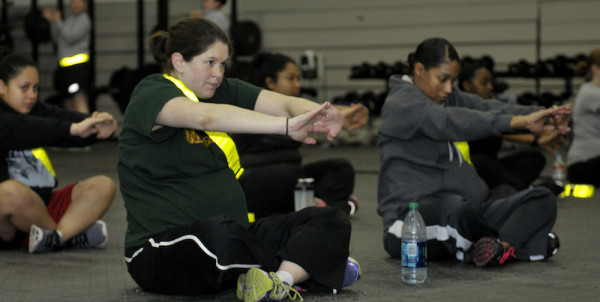

In 2014, a study by the VA Inspector General found that 20.4% of community-based outpatient clinics run by the Veterans Health Administration failed to provide adequate privacy for female veterans.
That number dropped to 14.3% in 2015, but still has a ways to go, according to a new report released June 19.
The findings come amid rising concerns from veterans service organizations that more needs to be done to ensure adequate services are available for women who rely on the VA for health care.
“The Veterans Health Administration is a large organization and ongoing training is expected,” Lou Celli, director of veterans affairs and rehabilitation at The American Legion National HQ, told Task & Purpose. “There are more women veteran specific clinics at VA medical centers today than ever before and while still not perfect, with the proper funding, we are confident that VA will be able to provide appropriate gender specific facilities at all VA medical locations.”
In 2014, nearly 8% of doors did not have manual or electronic door locks for the examination rooms used for women veterans, and that number only went down a few points to 5.4% in 2015. And 16 of the 93 clinics had physical settings where gowned female veterans couldn’t access restrooms without entering public areas, with “no alternative measures were in place“ in 2014; in 2015, the number dropped to four.
Still, much of the gender-specific medical care required by female veterans is carried out within VHA facilities, meaning regardless of the privacy issues, more women are trusting the VA to handle their health care needs.
The report found that 82.5% of of gender-specific care visits occurred within VA facilities, while only 17.5% were handled outside. Pregnancy was the one exception.
“We also noted that patients with pregnancy-related issues had the majority of their visits at non-VA sites rather than VA sites, this was the only subcategory of gender-specific care where we found this to be true,” the report reads.
While there is still need for further improvement, VHA appears to have taken some steps to ensure that it is better at addressing the needs of its female veterans, who make up about 10% of the overall veteran population. That number is expected to grow as women currently represent nearly 15% of service members.
The report did not have any specific criticisms for VHA; however, it did recommend that the VA’s acting under secretary for health, Dr. Poonam Alaigh, review and update the requirements for female veteran providers and make note of how and when those requirements are met by VA facilities.
“[We will continue] to evaluate the quality, access, and availability of safe and appropriate healthcare for women and are very pleased with the progress that VA has made over the years,” Celli added.
WATCH MORE:
